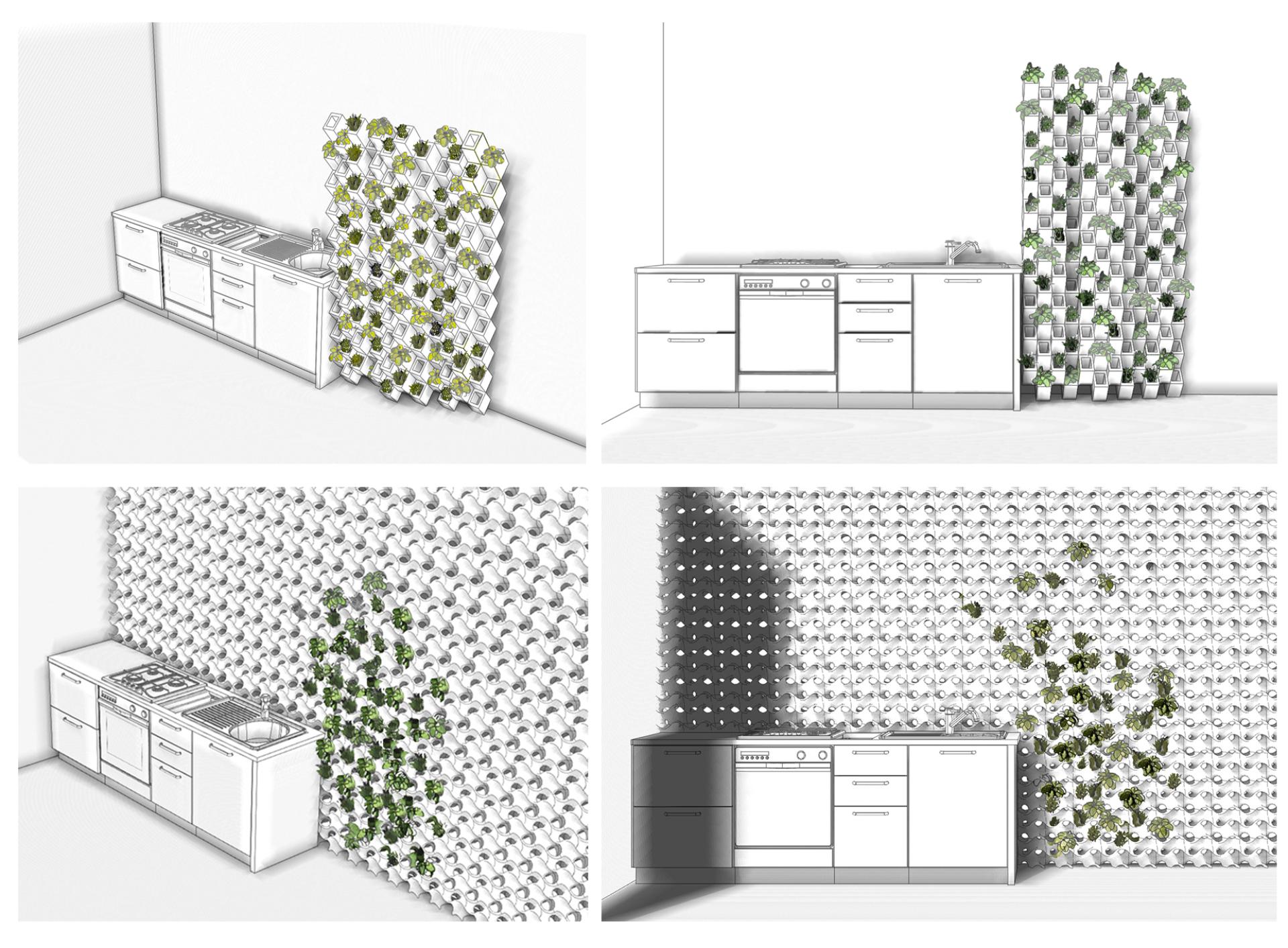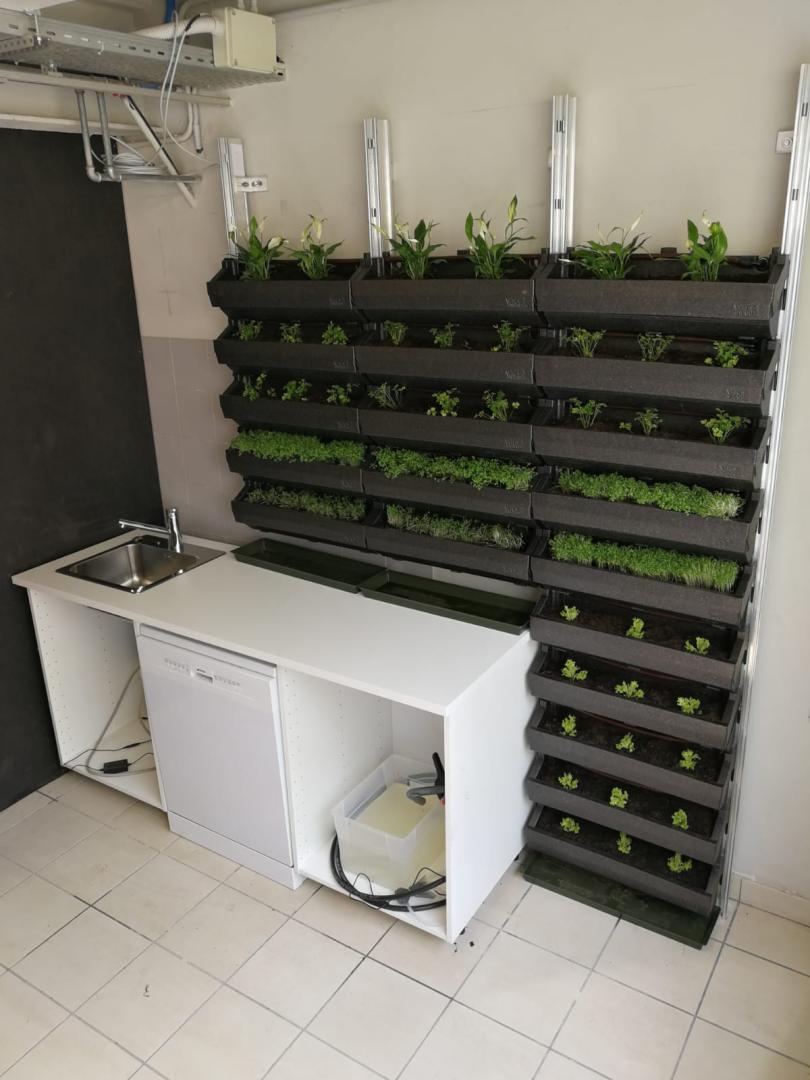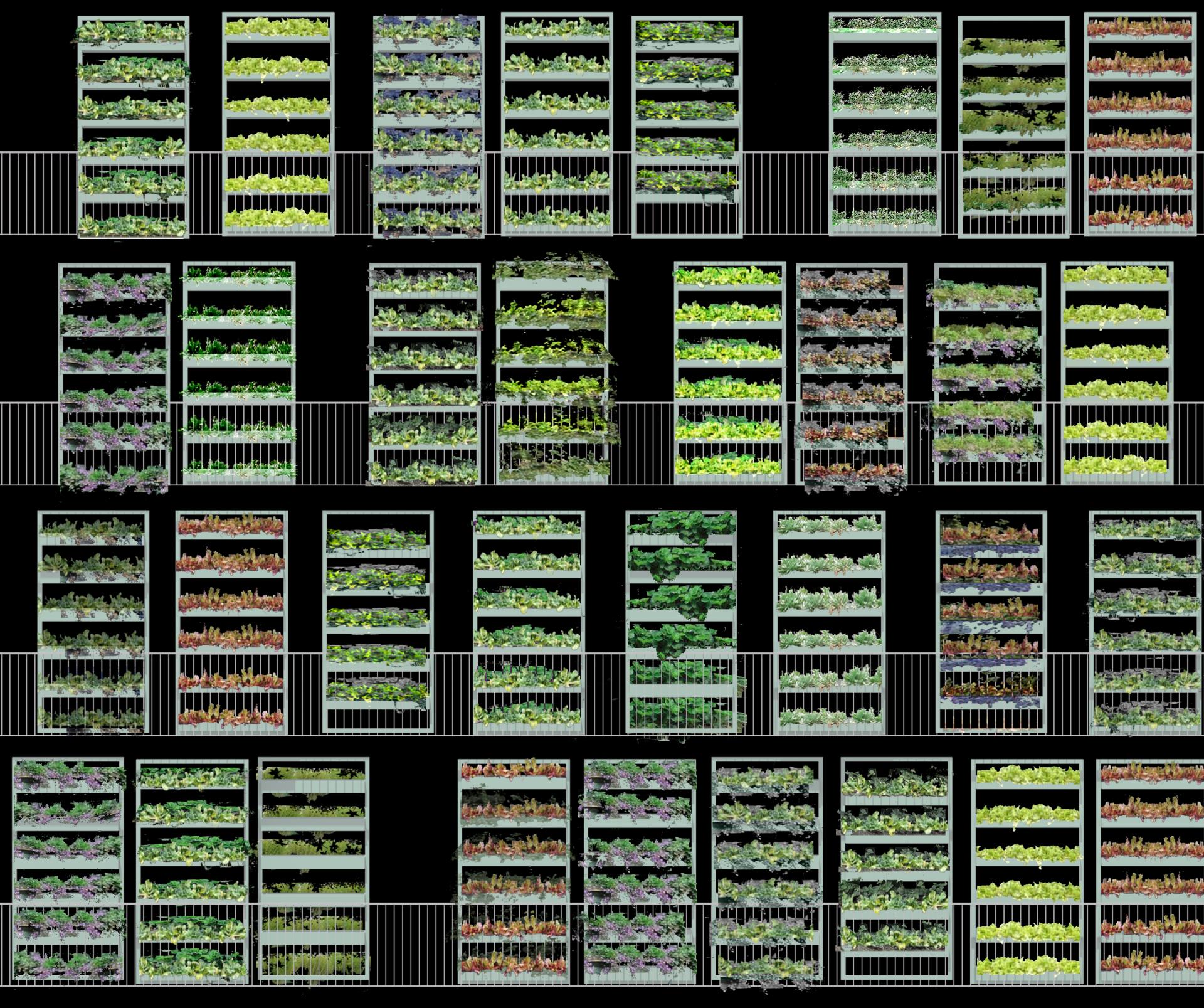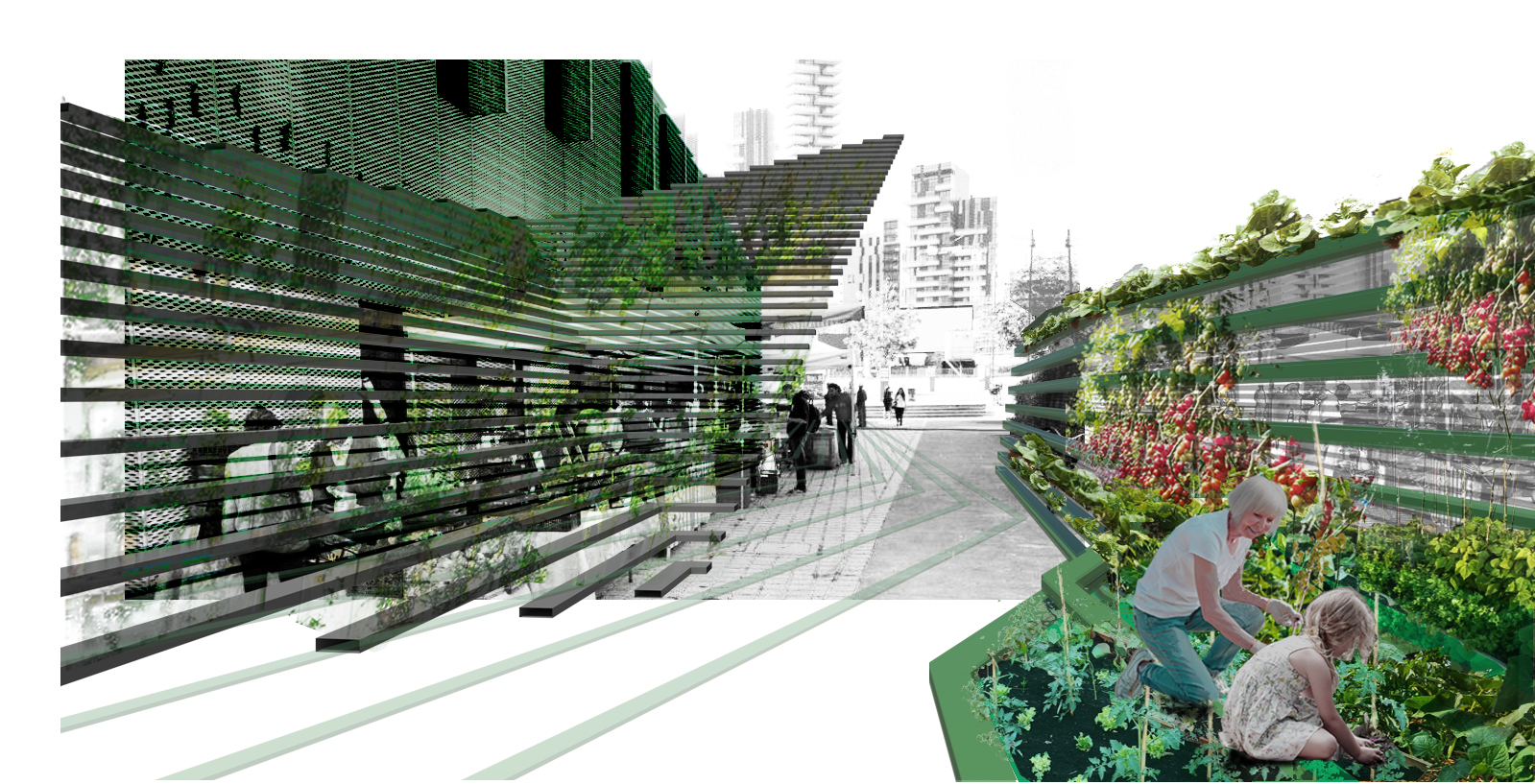Jetsons' kitchen
Basic information
Project Title
Full project title
Category
Project Description
Zero-mile food production is gaining popularity worldwide, due to greater awareness of the environmental impact of food transport and to expanding interest in healthy and sustainable diets.
To this purpose and to support a circular water economy we patented a system based on a biofilter, containing a consortium of microalgae and heterotrophic bacteria, applied to treat dishwater wastewater in order to reuse it in further washing cycles and for vegetable irrigation in a domestic vertical garden.
Geographical Scope
Project Region
Urban or rural issues
Physical or other transformations
EU Programme or fund
Which funds
Description of the project
Summary
The project consists of a system, including a biofilter, to recycle dishwasher wastewater in the cultivation of edible and ornamental plants, to limit domestic water use, reducing the amount of wastewater released in the environment and valorizing nutrients present in wastewater, and to improve the indoor environmental conditions (air quality, temperature and humidity). Furthermore, a modular system (fig 1) supports the production of healthy and safe zero-mile food, beneficial to the development of sustainable user behaviors, health awareness and pleasure.
An experimental physical prototype (fig 2) integrating kitchen furniture, dishwasher, water treatment system and a vertical garden has been realized for functional and aesthetic testing with experts and users.
The choice to face water saving and treatment problems in the kitchen environment is due to the acknowledgment that wastewater can be a cost-efficient and sustainable source of energy and nutrients and its reuse becomes more economically feasible if the point of reuse is close to the point of production. For this reason, the destination of reclaimed domestic water to on-site cultivation, taking advantage of its nutrients content, is an interesting strategy to gain value from it.
While water reuse practices in traditional agriculture are investigated at a greater extent, the exploitation of wastewater produced by households is a relatively untapped topic. In the meantime, urban gardening is gaining popularity. Besides healthy eating habits, this trend is also relevant for the environmental benefits it can provide, including greening and reduction of food transport. Innovative forms of cultivation applied so far are rooftop gardens, rooftop greenhouses, indoor farms, and other building-related forms, defined as “ZFarming’’, but indoor small-scale solutions are lacking.
Key objectives for sustainability
The invention consists of a system to be associated with a dishwasher to recondition wastewater so that it can be used both to irrigate vegetables and to be reused in subsequent washing cycles. The wastewater from the dishwasher (which is low in pathogens, heavy metals and pharmaceuticals) is reconditioned through an ad hoc designed biofilter and can fertilize plants thanks to the mineralized nutrient content. Irrigation with reclaimed wastewater, not only reduces the consumption of fresh water but also the use of fertilizers. Water circularity is achieved also through the use of the same water for several washing cycles.
The invention includes wastewater collection and distribution devices, filters (2 mechanical, 1 biological) and a plants’ irrigation system. The biological filter is built by the cyanobacterium Trichormus variabilis VRUC168 and heterotrophic bacteria thriving in wastewater; it is ad hoc assembled in a closed system, the cyanobacterium produces oxygen and the heterotrophs mineralize the organic component. In this way, food leftovers in wastewater are valorized for vegetable cultivation supporting sustainable eating habits in consumers through on-site food production.
Key objectives for aesthetics and quality
Growing zero-mile vegetables in a vertical garden generate various benefits in terms of perception and environment. Aesthetic benefits are evident in indoor design and facade partitions, while in environmental terms such greening improves air quality and local climate with consequent energy savings.
In terms of aesthetics, the prototype drew positive reactions in participants involved in ad hoc focus groups recalling the walls of innovative buildings such as the Milan Bosco Verticale skyscraper and certain pavilions at Expo Milano 2015.
A point that emerged in further interviews in accordance with the focus group was the symbolic meaning of the system, considered as an important motivation to choose it: unlike other eco-friendly devices, the Jetsons' kitchen is talkable and aesthetically pleasing.
Key objectives for inclusion
According to Science and Technology Studies, there is no substantial gap between technology and society. In fact, technological innovation is embedded from the beginning in a societal context that contributes – often unwittingly – to determine how technology develops and for what goals it strives. Under this perspective, the dichotomy between ‘expert technologist’ and ‘lay people’ is arbitrary, since the latter can be considered as creative subjects, dynamically engaged in the multidimensional practices co-producing technology. For this reason we decided to develop the project in a creative community with informal groups, associations, single citizens working together to improve the quality of their environment and daily life.
Reconnecting with the natural environment, saving fresh water and growing something fresh for the kitchen table is fundamental to our existence as human beings particularly in social or personal disadvantaged situations.
Results in relation to category
The project deals with the reuse of dishwasher wastewater in vegetable cultivation, producing several positive impacts in terms of resources circularity and life-cycle thinking.
The first benefit is the reduction of the amount of freshwater consumed (by filtering and reusing wastewater), and the amount of wastewater discharged. The System is based on a biofilter containing an ad hoc engineered consortium of selected microorganisms, which attack and consume the organic material present in the dishwasher wastewater (food residues), mineralizing it. The reclaimed wastewater is used in plant production and in the following dishwasher cycles.
The second benefit is the homemade production of vegetables, which allows the users to grow the wanted veggies and to freshly consume them, along with the gratification of "grow your own". The on-site production of not contaminated edible plants contributes to a sustainable diet stimulates healthy eating behaviors, and contemporary reduces the environmental impact due to food production, transport and marketing by standard procedures.
A third benefit deals with a cultural change on the acquisition of a different perception about the real value of wastewater, and on the passage from an abstract recycling concept to a real one. These changes may trigger further positive feedbacks in consumer lifestyle, pushing citizens to move from a linear economy to a regenerative circular one, as a general rule.
How Citizens benefit
The design of the integrated system for zero-mile food production by upcycling wastewater is based on a User Centered Design (UCD) approach including end user involvement from the beginning of the design process, multidisciplinary project team and iterative prototyping evaluation cycles.
The UCD approach has been implemented according to these phases: benchmarking analysis of domestic innovative systems for indoor plant cultivation; secondary data analysis; focus group and interviews with consumers and stakeholders; prototype interaction sessions.
UCD places the people in a virtuous circle: both process and final output are shared among several stakeholders guaranteeing short- and long-term impact.
Physical or other transformations
Innovative character
The project is innovative in technological, product and social terms.
From the technological point of view, the biofilter is innovative since it contains a specifically selected community of microorganisms, able to attack and consume the organic material present in the dishwasher wastewater (food residues) allowing the re-use of a part of the biofiltered effluent for subsequent dishwasher cycles as well as the upcycling of the remaining reclaimed water for the growth of plants.
In an industrial design perspective the project establishes a new product typology integrating a vertical garden in the kitchen furniture overcoming main stream approaches, often limited to the restyling of old-fashioned products, through an ecosystem approach. In fact, the Jetsons' kitchen is designed to create a living space fulfilling the requests of a society focused on environmental needs and quality of life.
In a social dimension, the project will open a positive feedback triggering a cultural change, as the acquisition of a different way of thinking about the real value of wastewater: it may be used as a resource to nourish the plants, rather than simply a dump material. Furthermore, it can move people from an abstract recycling concept to a real one, with the development of new everyday behaviors. These changed behavior may trigger a further positive feedback in consumer lifestyles, stimulating a transition towards a circular economy model at home and pushing citizens to move from a linear economy to a regener
Learning transferred to other parties
The invention can change both building and space factors of green decoration to produce more resilient indoor and outdoor products, also taking into account the legitimate needs of users with regard to the satisfaction of both the food quality aspects and the aesthetics of the system as a whole at building (fig 3) and urban scale (Fig 4).
It can be applied in multi-family domestic systems (use of wastewater to irrigate urban gardens), systems for collective catering (restaurants, canteens, farmhouses, etc.) and systems for extreme environments (mountain shelters, Antarctic bases, space applications),




